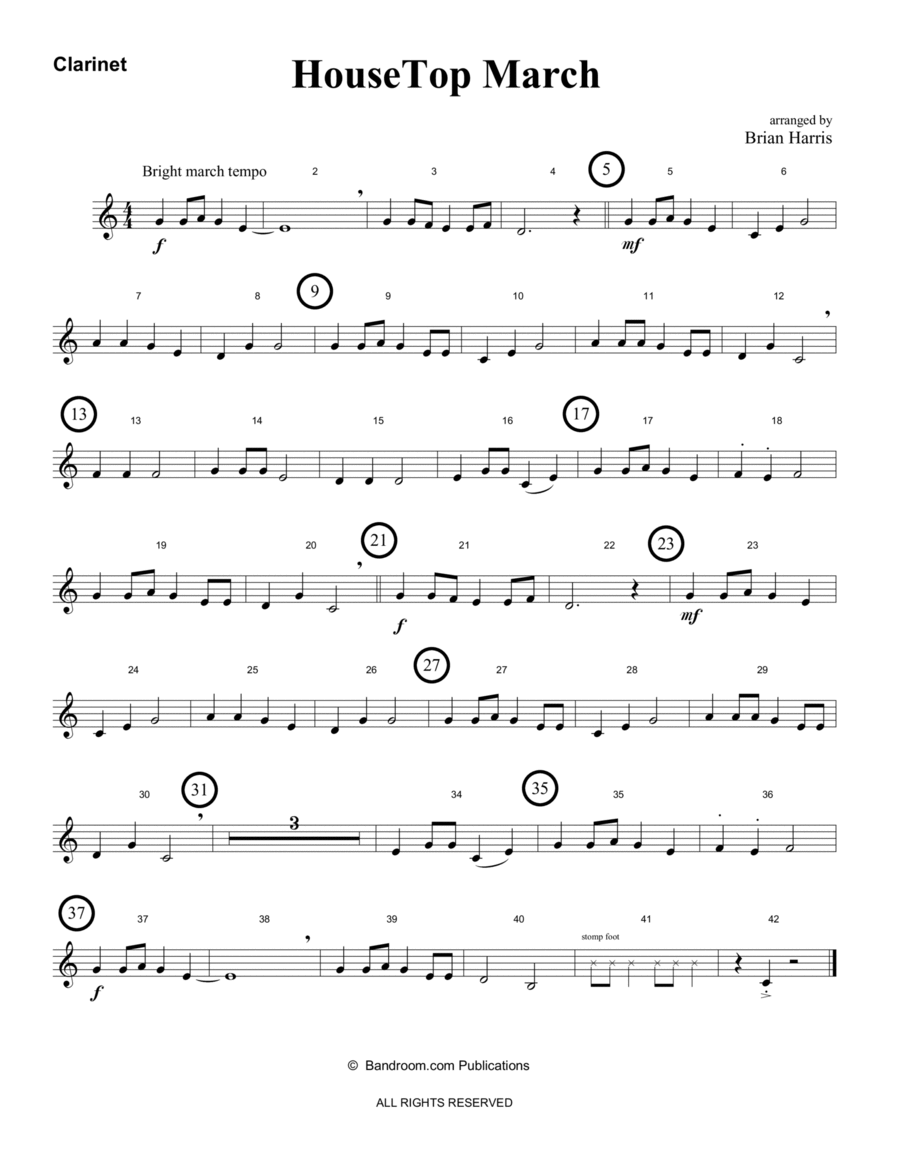Concert Band - Level 1 - Digital Download SKU: A0.1431893 Composed by Brian Harris. Arranged by Brian Harris. Christmas,Holiday,Instructional,Pop,Traditional. 26 pages. HMS Music #1012368. Published by HMS Music (A0.1431893). _______________________A favorite of beginners and parents alike, HOUSETOP MARCH will bring a smile to everyones face . . . even Mr. Scrooge!A march-style setting of Up On The House Top (sometimes called Up On The Roof Top), this easy work contains a single one-measure solo for your best trumpeter and a one-note solo for the humble triangle player. And at the end, be certain to listen for the reindeer paws on the roof!DIFFICULTY LEVEL: Very Easy (slightly more difficult than JOY TO THE KING).PROGRAMMING: Winter Holiday/Christmas concert.FEATURES: melody distributed through all wind parts; key of B-flat major; simple parts using only quarter-, half-, and eighth notes.CHALLENGES: Introduction and ending use 1 measure of canon/imitation; one-measure trumpet solo; use of foot stomps at end (their favorite spot!); a one-strike triangle solo in last measure.RANGES: uses only notes of the B-flat Concert scale; clarinets remain below break.INSTRUMENTATION: includes Full Conductor Score (8 pages) and Parts (17 pages) for each instrument: Flute, Oboe, Bassoon, Clarinet, Bass Clarinet, Alto Sax, Tenor Sax, Baritone Sax, Trumpet, Horn in F (for beginners playing low notes), Horn in F (for beginners playing high notes), Trombone/Euphonium, T.C. Euphonium, Tuba, Percussion 1 (Snare & Bass Drum), Percussion 2 (Crash Cymbals, Triangle, Sleigh Bells), Bells/Mallets.MINIMUM INSTRUMENTATION REQUIREMENTS: Flute, Clarinet, Trumpet, and Bass Line (any low reed or low brass instrument), Percussion._ _ _ _ _ _ _ _ _ _ _ _ _ _ _ _ _ _ _ _ARRANGER/COMPOSER: Now retired, Brian Harris holds the Ph.D. in Music Education from the Florida State University and was a band director for over 30 years at public school and college programs._______________________________NOTE: this Digital Download document is assembled with the Clarinet part appearing as page 1 so you may view it on the web site as you listen to the sound file. When you print the full document (26 pages, total), the first page to print will be the Clarinet part, followed by 8 pages of the FULL SCORE, then the remaining PARTS (16 pages), and a SITE LICENSE permitting you to make multiple copies for use by your school/institution - year after year. (BcP-YB)___________________________Click here to view other Winter / Christmas Concert works from Bandroom.com Publications:Joy to the King (for beginners; super easy)Jingle Those Bells! (for beginners; super easy with flexible advanced parts)HouseTop March (easy; for advanced beginners or 2nd-year players)Ukrainian Bell Carol (for advanced beginners or 2nd-year players)Tidings of Joy (for advanced beginners or 2nd-year players)Journey of the Magi (for 2nd- or 3rd-year players)Also, please consider Latin Lullaby for your Spring Concert (for beginners)______________________.
